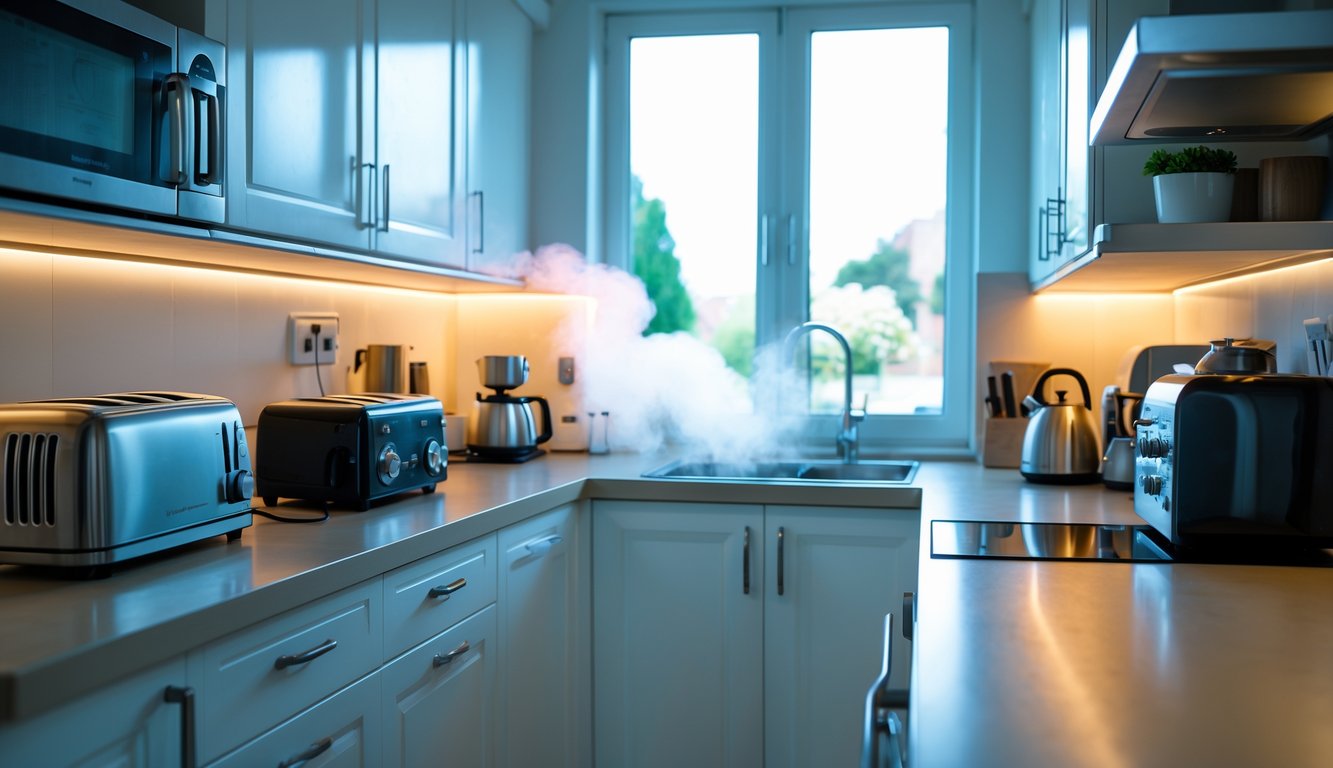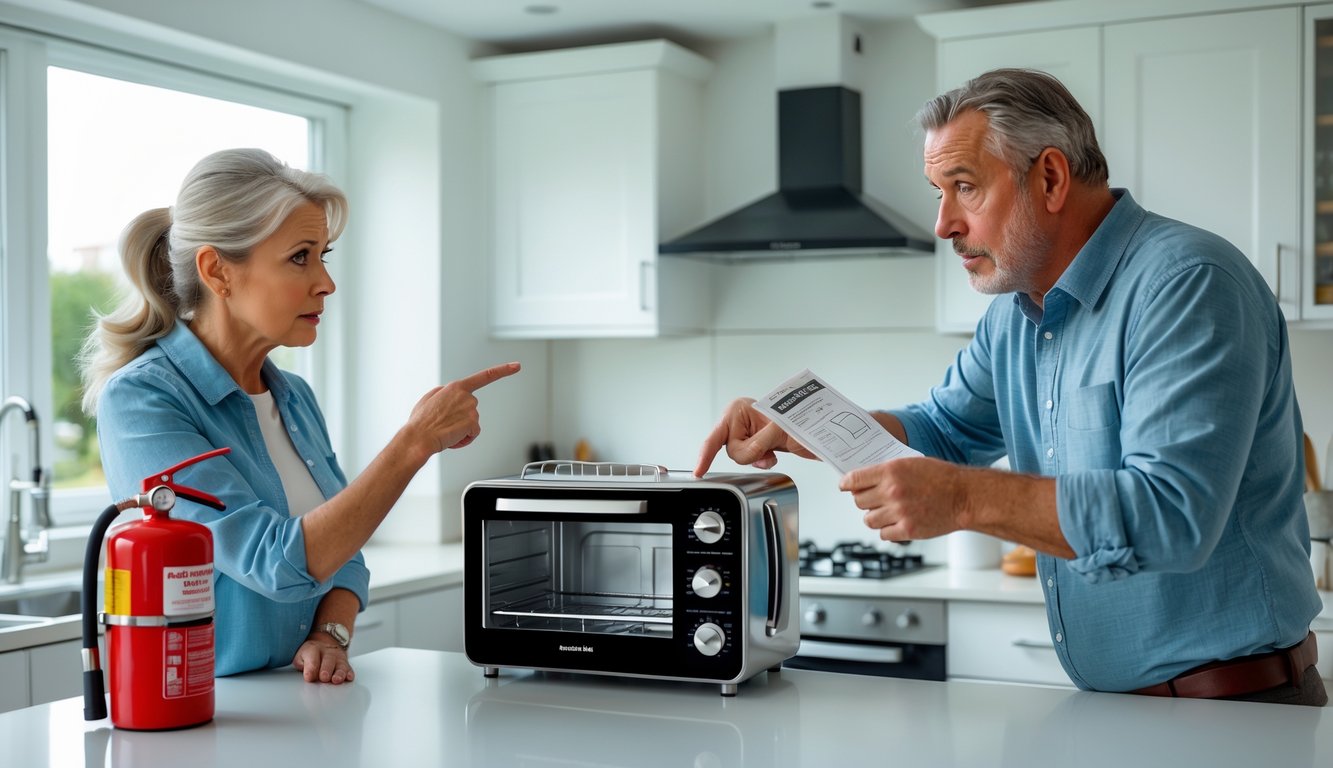
Fire Hazards: My Kitchen Is Basically a Trap
Look around your kitchen—maybe check the laundry room too. There’s a whole mess of weird design choices and shortcuts just waiting to start trouble. Appliance fires aren’t rare. Most of the warnings are bland and useless. If you’ve ever seen a melted plug or a scorched wall, you know “stay safe” doesn’t cut it.
Front-Mounted Knobs and Accidental Activation
Front-mounted knobs. Why? Seriously, who’s still convinced these things are a good idea? I mean, just bump one while you’re squeezing past in a tiny kitchen, or let a toddler go wild, and suddenly the burner’s hissing to life while you’re elbow-deep in the fridge. It’s not some weird urban legend—actual stats (the UK, for example, clocked over 6,000 household fires in two years from faulty appliances and cords) back this up. And have you tried not accidentally turning on a knob with your hip? Good luck. See: appliance placement and use hazards.
Even better, some oven companies sneakily admit in recall documents that their knob design tricks you—“off” feels safe, but nope, it’s not. Go ahead, nudge every knob in your kitchen. How many spin like they’re barely attached? I once watched my elderly neighbor fire up her gas range with her walker bag—no click, no warning, just instant gas. Her insurance saga lasted longer than the actual cleanup. Sure, brands love to talk about child-proofing, but what about grown-ups in a rush, pets, or just the frantic mess of dinner? Nobody cares until something’s on fire.
Defective Control Lock and Lock Out Features
Control lock buttons: sounds like a fix, right? Hold for three seconds, and you’re safe. Except, no. Half the time, a power flicker or damp hands and the thing resets or ignores you, so dryers and ovens are just one accidental swipe from starting up. I swear, they slap these “lock out” features on as an afterthought. Sometimes you get a blinking error that means nothing—I’ve wasted whole afternoons on those.
When these locks fail, kids start microwaves for fun, adults lean on touch panels while wiping them down, and suddenly something’s running and you don’t even hear it. Consumer safety groups keep yelling about how modern appliances become fire hazards when locks don’t work. Why does anyone trust a tiny LED you can’t see in daylight? I watched a friend’s washer start itself during a storm because the “lock” flickered off. That’s… not great.
Heating Elements and Overheating Dangers
Heating elements—don’t get me started. Every single one, from bargain bin toasters to those ancient wall heaters your landlord swears are “fine,” seems determined to ignore its own limits. Most fires aren’t dramatic explosions; they’re slow, dumb overheating—lint, busted thermostats, sensors that just give up. Seriously, why don’t manuals scream in giant letters: overheating happens, a lot? Malfunctioning heating elements are behind thousands of blazes, but you never hear about them.
A coworker swears her dishwasher’s heating coil glowed orange mid-cycle. Manufacturer? “Not a problem.” Fire departments keep begging people to clear behind dryers, check cords, don’t pile laundry on a hot oven. Who actually does that every week? Nobody. Sensor and cutoff switch failures barely get a headline, but they’re everywhere—no fireworks, just burnt wires and a smell you never forget. If your fuse box trips for “no reason,” maybe it’s trying to warn you.
Identifying and Responding to Appliance Recalls

Funny how none of this feels urgent until your toaster spits sparks at you. Tracking down serial numbers, squinting at faded stickers, wrestling with manufacturer websites, and then getting hit with a recall warning—it all blurs together when you’re staring at a melted outlet. Safety isn’t abstract; it’s your kitchen, your insurance, your sanity.
Finding Model and Serial Numbers
Ever tried to find a serial number behind your fridge? I’ve scraped my knuckles and cursed out loud just to read a warped sticker. These numbers aren’t just paperwork—they’re the only thing standing between “fine” and “fire hazard.” You’re hunting for awkward strings of numbers, faded barcodes, or etched plates in the dumbest places—inside washer doors, behind TVs, sometimes even under panels you can’t budge.
And brands hide them in the weirdest spots. I’ve literally used a flashlight app and a compact mirror to find one. Recall experts say this info is your ticket to checking recall lists fast, but it’s like manufacturers dare you to give up.
Using Manufacturer Websites Like lg.com
lg.com: a place where hope goes to die. Want to check if your LG fridge or washer is on a recall? Here’s a twist—model numbers, not “product names,” matter. You punch in every digit, every dash, and the site either gives you nothing, errors out, or links to a form from 2018.
Some brands at least have official recall sections, but LG’s site? Wants model and serial numbers, exactly right, or it just fails. If you do get it right, maybe you’ll see options for a free repair, or a refund, or nothing at all. Don’t trust random blogs; if the warning doesn’t come from the actual company, it’s probably outdated or a scam.
Interpreting Recall Notices and Warning Labels
Ever tried to read a recall notice? It’s like decoding legalese: “potential overheating may result in localized fire events.” Translation: “your kitchen might catch fire.” The only thing that matters—scan for verbs, dates, and what broke. If your microwave’s warning label changes, don’t ignore it, especially if it says “stop using now.”
Some notices just say “be careful.” Others want you to unplug and book a repair (usually free, if you can get through). Don’t toss the mail—those boring postcards might actually be important. I always ignore “call your distributor” until it’s too late. If you’re confused, call the official hotline; it’s slow, but better than Facebook or random repair shops. Manufacturers have to fix or replace recalled stuff, but you’ll have to push—otherwise, you’re waiting for the next fire risk to sneak up.